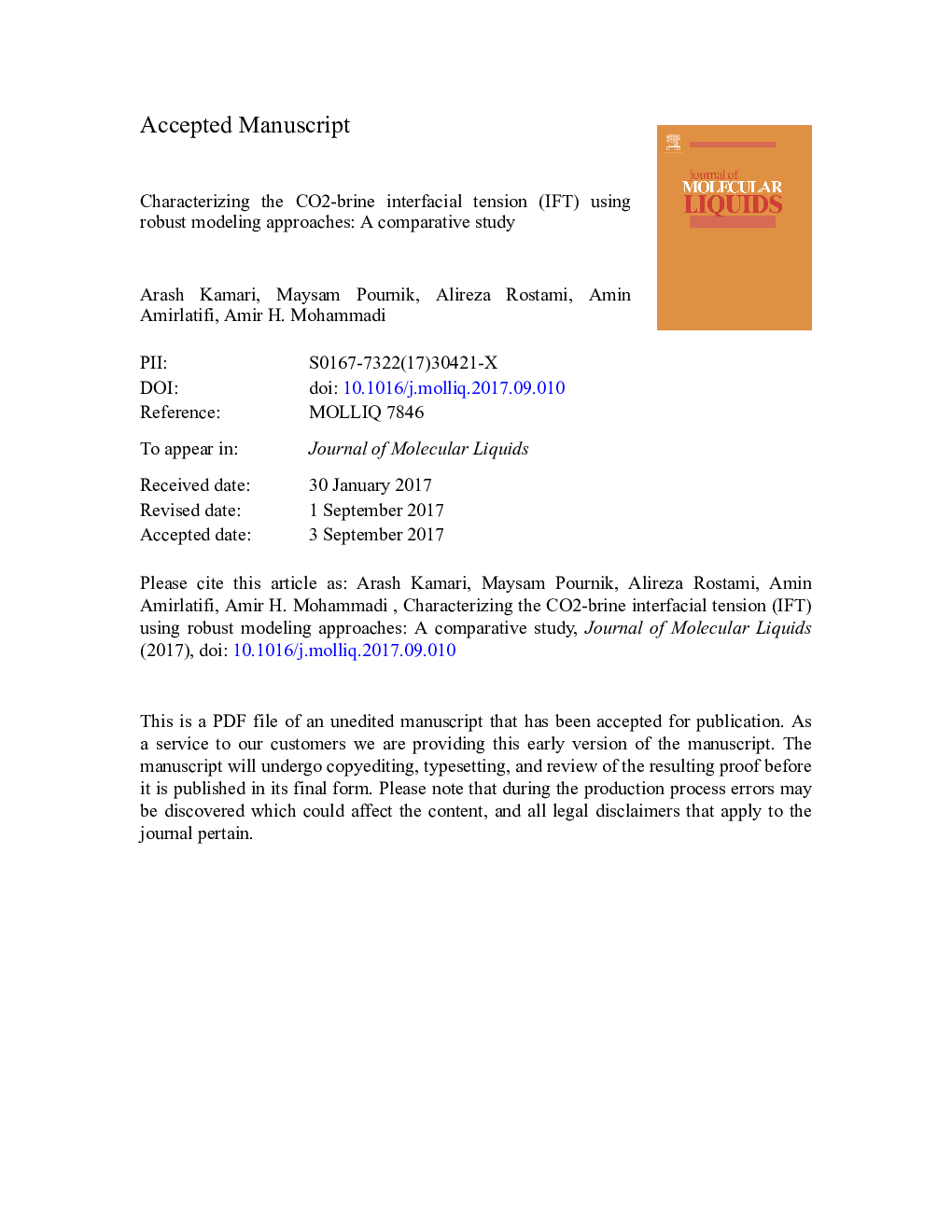| Article ID | Journal | Published Year | Pages | File Type |
|---|---|---|---|---|
| 5408135 | Journal of Molecular Liquids | 2017 | 25 Pages |
Abstract
Interfacial phenomenon between CO2 and aqueous phases affects the distribution and behavior of fluids in porous media, and also plays a major role in determining the usefulness of enhanced oil recovery methods particularly CO2 flooding. Therefore, in this study, the interfacial tension (IFT) between CO2 and brine is predicted as a function of the temperature, pressure, bivalent cation molality, monovalent cation molality as well as methane and nitrogen mole fractions using three robust modeling strategies called gene expression programming (GEP), decision tree (DT), and least squares support vector machine (LSSVM). Furthermore, the outcomes obtained by the methods mentioned above have been assessed by comparing with the reported estimates of artificial neural network (ANN) in the literature. Amongst the all models proposed in the current study, it is demonstrated that the developed regression DT tool and the available ANN in literature are the most precise models which could be applied properly as the reliable methods for the characterization and determination of IFT between CO2 and brine, and also for geological CO2 storage.
Related Topics
Physical Sciences and Engineering
Chemistry
Physical and Theoretical Chemistry
Authors
Arash Kamari, Maysam Pournik, Alireza Rostami, Amin Amirlatifi, Amir H. Mohammadi,
